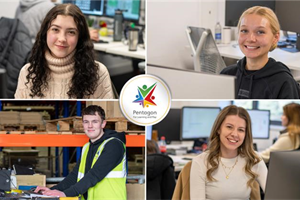
Company News
Expert Advice – An Interview with an Early Years Advisory Teacher
We speak with Nichola Gill-Smith, who has worked in education since 2006 and has spent time working as an LA Early Years Advisory Teacher (Birth to 3 specialist SEND), along with founding ‘Smitten Kids’, about the following topics:
- Her background
- Her roles
- Why she chose education
- SEND children and outdoor learning
- Thoughts On Term Time Installations
- Memorable Moments
- Her ideal outdoor area for EY children with SEND
- Favourite Pentagon Products
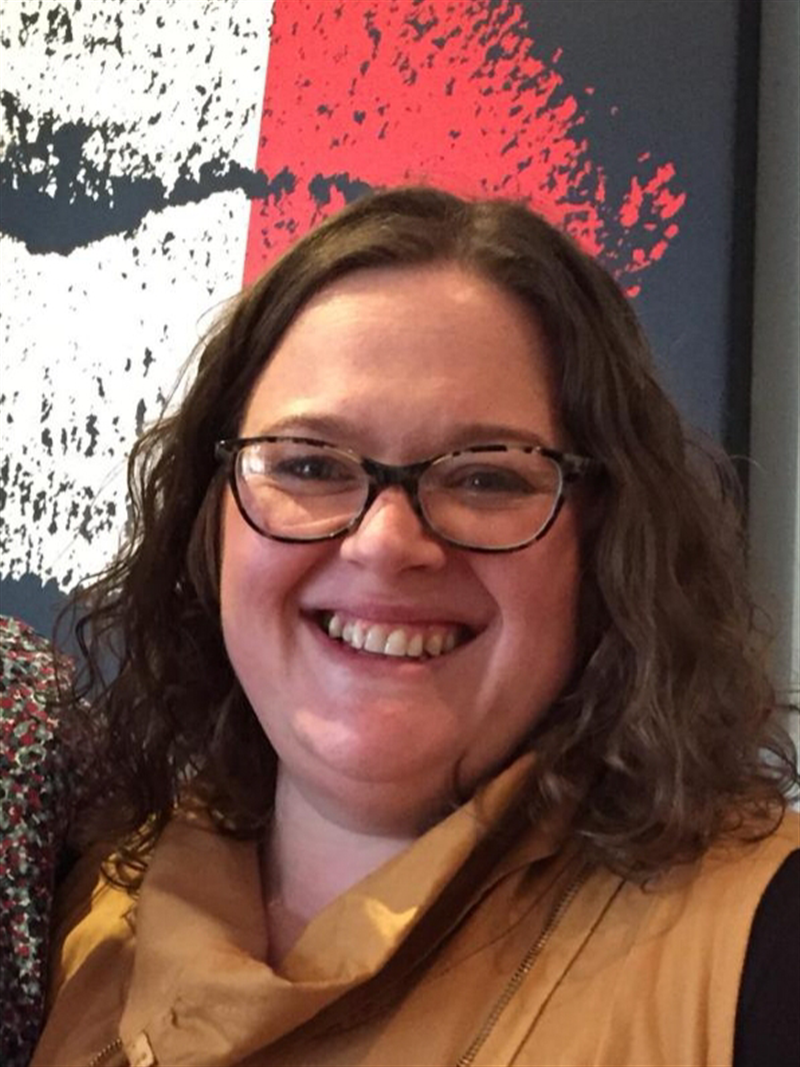
Nichola's Early Years Background
I started as a one to one support worker in a mainstream school working with children with special educational needs and disability (SEND). After a year, I decided I wanted to gain a PGCE and once qualified, I was offered a job in a mainstream school, working in Year 5.
After working in every year group (apart from Year 6!), I was then asked to work in the Nursery. It was really daunting at first as they are so little, but I quickly realised that I’d found my niche and the place I wanted to be.
Once I’d experienced Early Years, I never looked back or had any intention of being anywhere else apart from Nursery or Reception and although I really loved experiencing the majority of year groups, there’s just something so special about Early Years - it’s such a lovely age group.
I genuinely believe that every member of teaching staff should have to spend time in Early Years. Through play, you see first-hand the different styles of learning; how they process things, how they work through things, whether they need an extension of their interests, where they need stretching and challenging and where you can just let them work through it and figure it out for themselves.
One of the biggest skills you can have as an Early Years Teacher is to interact sensitively with children. It’s knowing when to step back, just observe and wait to be invited into the play. I think that’s a huge skill that is highly underrated.
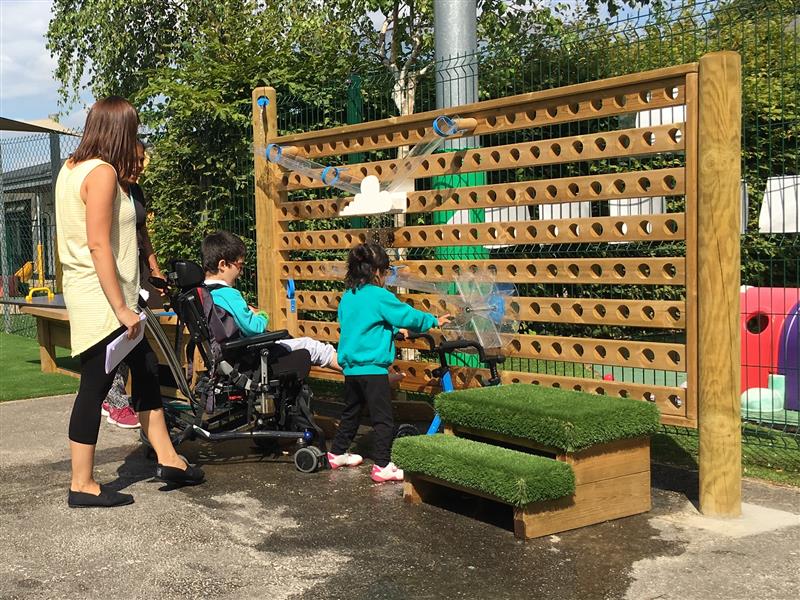
My Roles
I began as an Early Years Advisory Teacher within a Local Authority which supports children with special educational needs and disability from birth – 25 years. My team specialises in supporting Early Years settings, families and children with SEND or emerging SEND from birth to 3 years.
Due to the majority of the children not being in educational settings, we provide a lot of our support at home or in groups at the children’s centres. Our work is centred on developing pre-verbal skills, early physical skills such as hand movements to encourage grasp and eye gaze.
We encourage lots of multi-sensory activities as it plays a huge part in development and the outdoors is a firm favourite due to the vast amount of natural sensory simulation it creates through the sights, sounds and smells it provides.
We use a lot of ‘Intensive Interaction’ with our children, which was established by David Hewett. It helps children to figure out those early communications skills through a turn taking approach and allows you to tune in to the child and what they are interested in. You are responding to the children’s facial expressions, gestures, eye contact and experimenting with the sounds their voices can make.
When it works, it really is a beautiful thing to see. Children can be locked in their own world and having those moments where they have an intensive interaction that makes them feel seen and heard is incredible for everyone involved.
I also established Smitten Kids where I currently work with three Local Authorities running workshops for foster carers. We work on building relationships and effective communication with children and looking at the impact that possible adverse experiences or trauma might have on children and how that might affect the children’s development.
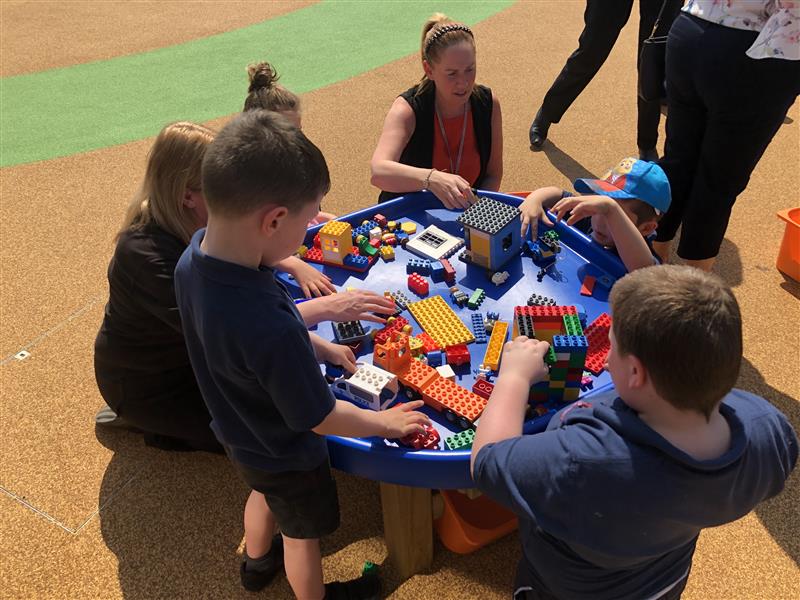
Within the workshops we develop language skills through a multi-sensory approach using playdoh, storytelling stones and jars, puppets and how to model positive communication. We promote lots of nursery rhymes, looking at pictures in story books to discuss what is happening and read fairy tales.
Fairy tales are great because although there is a happy ending most of the time, not everybody comes to the happy ending in the way that they started. Sometimes, there has been trauma and quite upsetting things that have happened to them, however, they have come out the other side okay, but maybe changed or transformed in some way.
I believe it’s important that these children can relate to fairy tales. They have had trauma, they have had an awful experience, they’re okay, but they are changed. It’s then important that they learn how to communicate, share and regulate their emotions knowing someone is there to support and guide them.
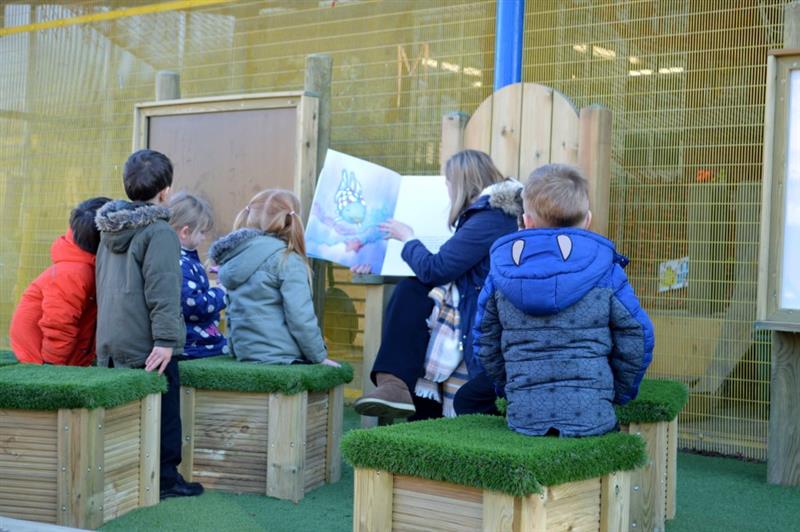
Why Did I Choose Education?
It’s that ‘lightbulb’ moment: that spark that children have. I think you make a difference on a daily basis because if there isn’t a difference on a daily basis with those children you’re working with, then there’s really no need for you to be there. Most children will move forward every single day without your help. I have a nice analogy that I like to use;
“Every child, on their own, will learn a tennis ball size of information. Your job as a practitioner is to make it into a football size”
We have such a privileged job to be able to develop children’s skills. It really stands out for me when I worked on a one to one basis and saw children in quite distressed states due to their environment being too bright, too noisy and over stimulating, which resulted in them being unable to seek calmness and self-regulate.
By implementing the positive interventions of a sensitive person who made those subtle and small changes to suit their needs, it allowed the children to refocus and regulate. It’s about building positive relationships with children and understanding their individual needs.
Why I Am Passionate About Outdoor Learning
The outdoor environment can provide a multi-sensory approach to the children’s learning as you have the sights, sounds, smells and feelings, but it’s very natural and in tune with children, so accessibility is improved. Children are naturally inquisitive and an intriguing outdoor area is an incredible place for them to ignite those instincts.
A lot of the children we support have a social, communication difficulty or disorder. They may have an emerging SEND, which means they find it very difficult to communicate what they think and feel.
As practitioners, we observe their body language, their eye gaze and responses. Therefore when we take our children outside, it is like an added dimension has happened and they become so excited, engaged and fascinated by the natural world – it’s wonderful to observe!
For all children, using a quality, outdoor area in all weathers and seasons is a fantastic, multisensory experience. I truly believe all weather is great and yes, the wind really does make them wild!
As cliche as it is, being outdoors really is good for the soul. It’s natural, it’s real and it offers a way of transferring those skills they’ve learnt inside to outside. You can do things bigger and messier outside and it really allows children the opportunity to explore and be free.
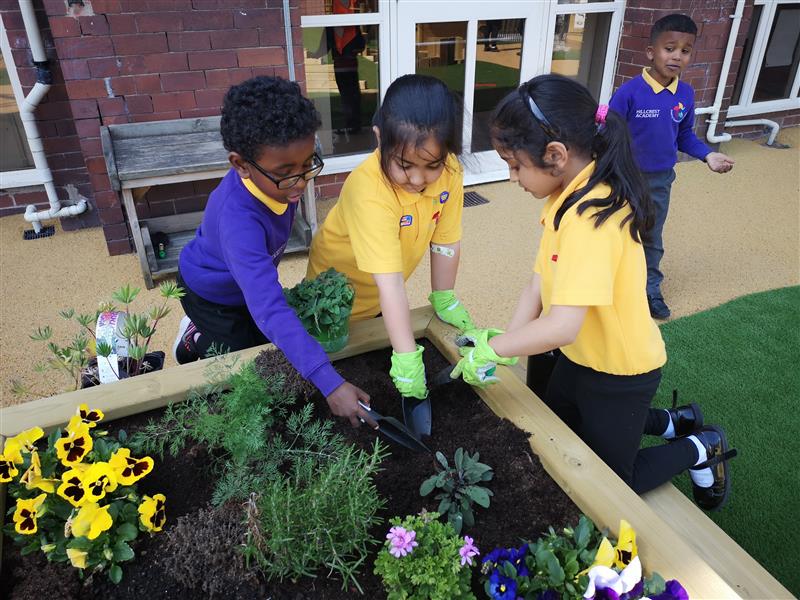
My Advice On Term Time Installations
I absolutely love it! The children are fascinated and genuinely wowed by it all plus it really contributes to the children feeling involved in the process from start to finish. It encourages creativity with the curriculum and provides children with real life learning – it’s always a bonus when the installation team are engaging with the children, too.
Planning lessons around the installation really puts their learning into context. We would talk about what is happening and see the changes on a daily basis, which encouraged the children to be creative through role play and by drawing or making their own outdoor areas whilst developing the language of size.
Within those situations, you have a variety of language abilities, but when you are providing a quality and real-life teaching environment, children do talk more because they have the language modelled and take inspiration not only from the adult but from their peers.
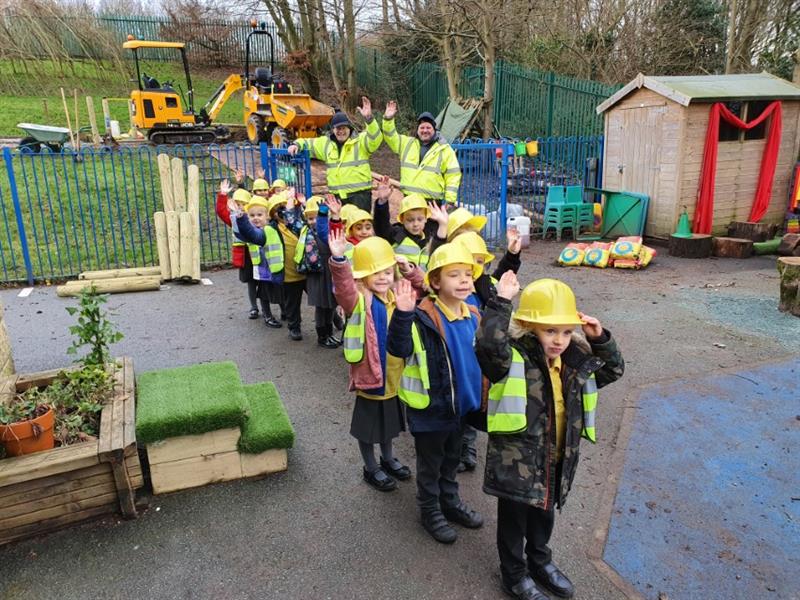
One Of My Most Memorable Moments
There have been many, but one that stands out was the time we decided to do a dinosaur theme.
I’d put huge dinosaur footprints throughout the Nursery, leading to the outside area and up onto the roof and so when the children came in, I went into full role play mode (the parents must have thought I was bonkers!) and set the scene of being dinosaur detectives! It was great fun as it instantly captured their imagination.
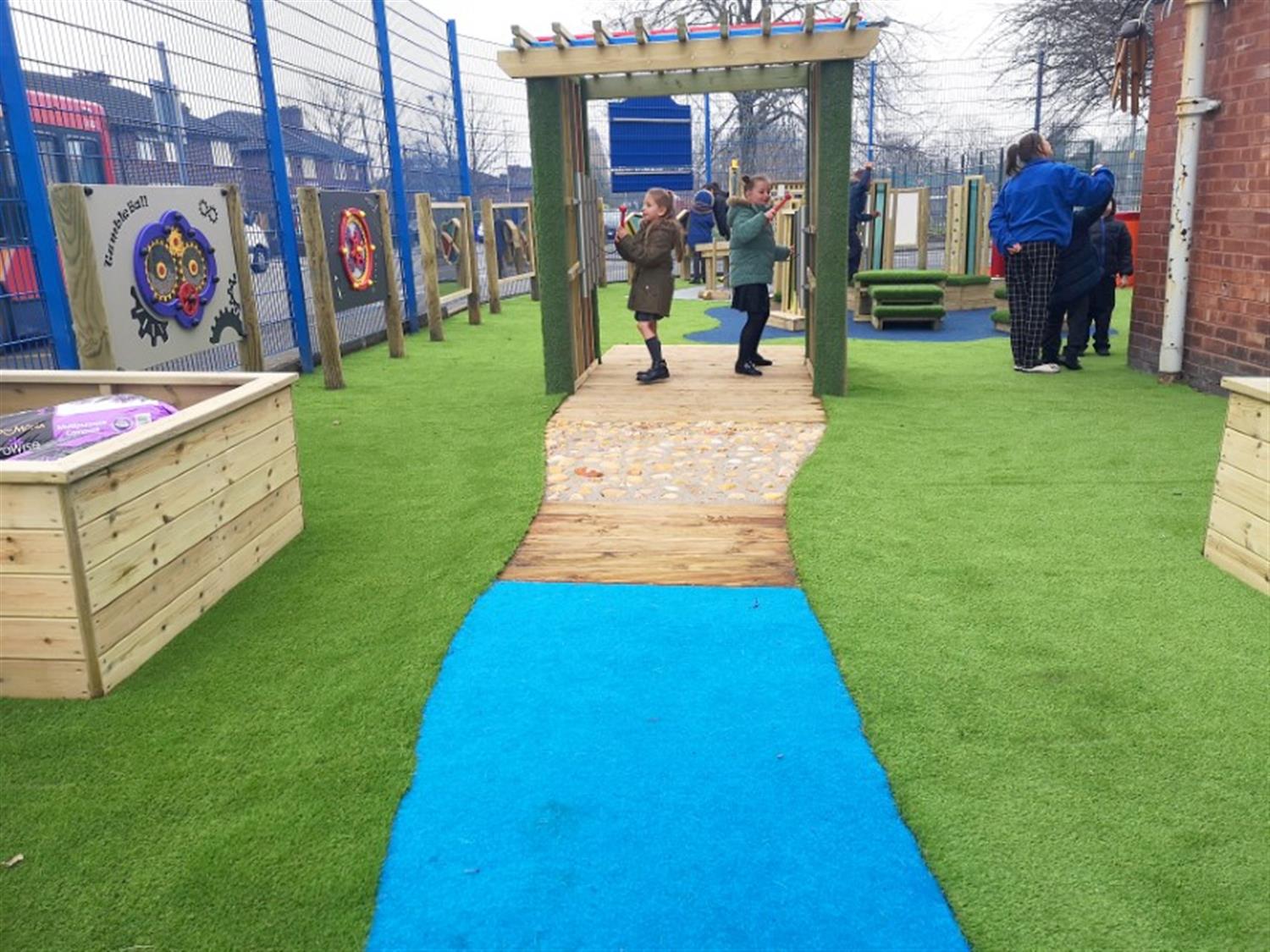
We measured our feet against the mysterious footprints, followed the trail outside and at the far end of the outdoor area was a dinosaur egg! Seeing the learning and imagination was fantastic, it gave me a hook to hang their learning on and we stayed outside for the entire week.
The children sang nursery rhymes to the egg, kept it warm and safe and had even began to hear something move inside (I also had to remind myself that it really was just paper mache!).
The children were so engaged by the dinosaur egg that they embraced every aspect of the topic and even built the egg a home with a bed. Infact, one little boy got quite concerned that the dinosaur might return for the egg, but once I had convinced him it was a friendly dinosaur, his worries were eased and he loved it – it definitely is a special memory.
My Advice on the Ideal Outdoor Area For Early Years Children With SEND
I really like to see outdoor areas with separate areas and accessible resources. When children first start learning how to mark make, it is so important that they are able to do it in a variety of ways - not just sat at a table.
Chalkboards, painting on Perspex with either a brush or sprayer or even using their hands and feet is great! I enjoy using slatted panels to divide areas but also to hang things from or to create music, the advantage of being outdoors is that it motivates children to experiment and teaches children that learning isn’t just done indoors.
Mud kitchens are a must! A mud kitchen can be a multisensory experience or a high quality, in depth role play - I’ve been served everything from muddy moussaka to sticky mash!

Water play outdoors is also fantastic as you can teach children the ‘cause of effect’, set challenges and watch how various objects move in water.
Creating smaller areas that have a purpose, such as reading or relaxing are great as the children I support sometimes require those break out areas from activities.
Outdoor planters are an excellent addition to any outdoor area as they provide a multisensory feature whilst also teaching children about lifecycles of plants and how to care for living things.
It’s also important that the outdoor area is accessible to all children. Having resources at various heights is ideal as it means that children who may not be walking can potentially still pull themselves up to a kneeling position or can remain seated to join in the activity with their peers.

My Advice on Pentagon Products
The In-ground trampoline is a winner for me, they fantastic at helping children to self-regulate and who doesn’t love trampolines!
What a great idea the Get Set, Go! Blocks are. These are wonderful promoting gross motor skills by encouraging the children to use their bodies and experiment. It is also provides the added benefits of promoting positive communication and turn taking.
The Sleeper planters are also a top pick due to the multi-sensory benefits they provide and because children can walk, cruise, kneel or sit at them.
And finally, the amazing Sensory Tunnel. The colours are stunning in all weathers
Product Spotlight
Advice and Top-Tips For Educators
In Early Years, outdoor play shouldn’t be a free for all. Facilitate their learning, then step back and enjoy watching their characters, curiosity and imagination evolve in front of you!
Pentagon Play have been working with SEN schools for over 20 years and are experts when it comes to developing outdoor learning environments for children with special educational needs. If you'd like to improve your playground through the installation of innovative SEN Playground Equipment, please Contact Us.



.jpg)


